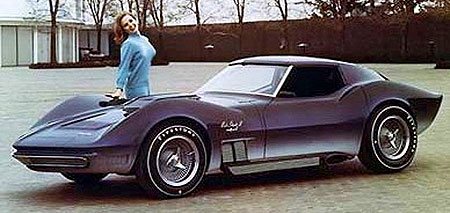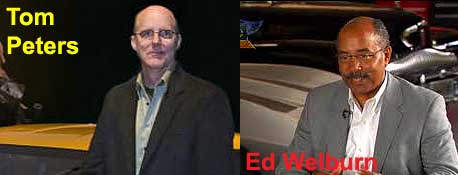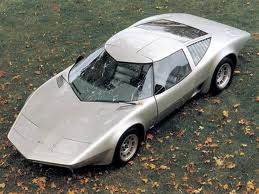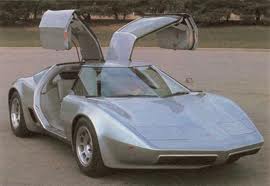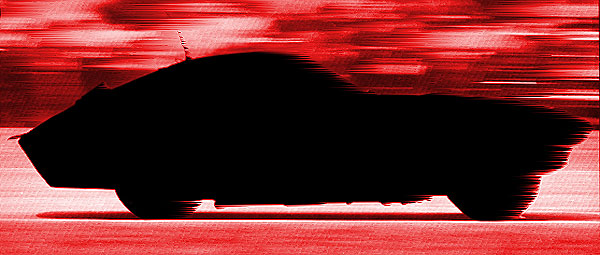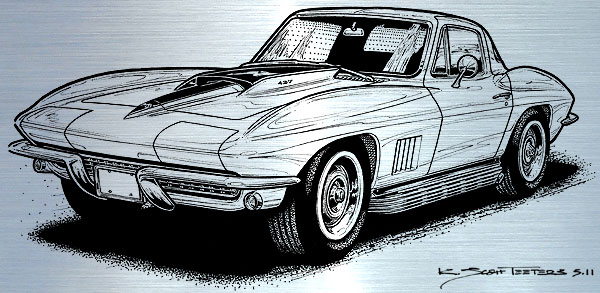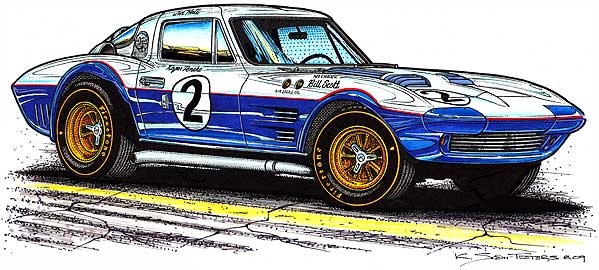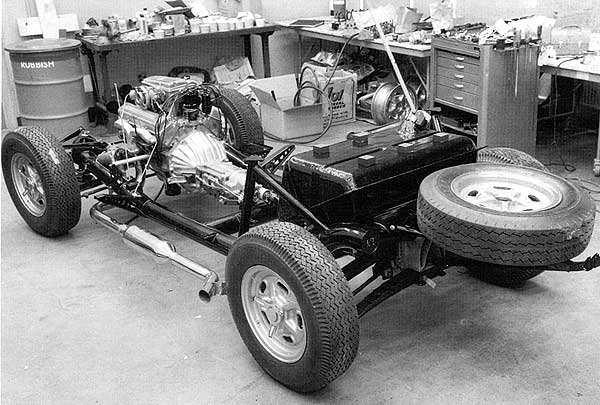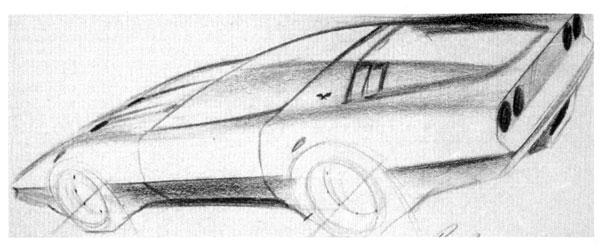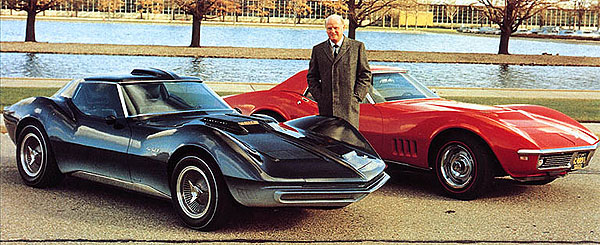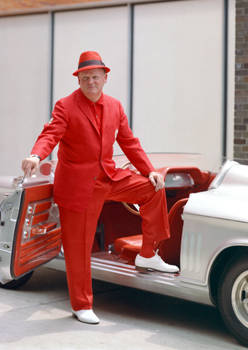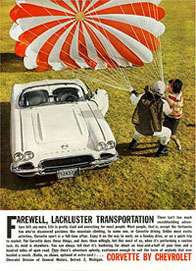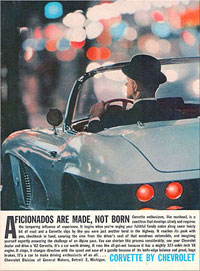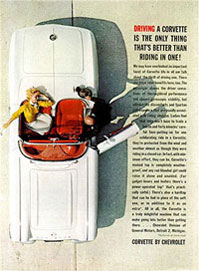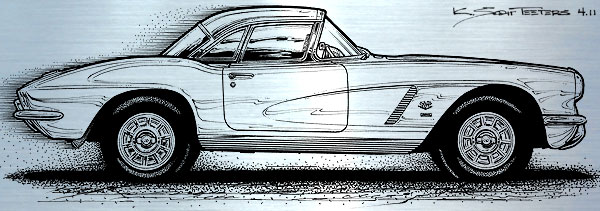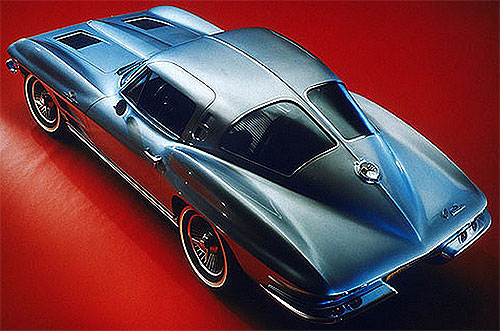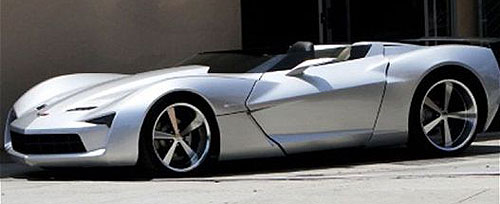Dateline: 9.17.11
“Kick the hell out of the status quo!” – Ed Cole
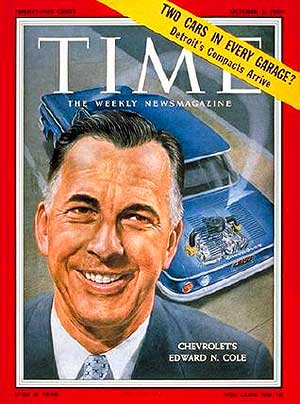
Ed Cole was one of what I call, “The Four Fathers of the Corvette.” The first Father of the Corvette was Harley Earl, the designer and creator of the Corvette. Earl was the “Idea Guy.” Ed Cole was the “Go-to” guy. Ed was already the chief of engineering of Chevrolet in ‘53 and was working on what would become the Small-Block Chevy engine. He was also the man that hired Zora Arkus-Duntov. The third Father of the Corvette was Zora Arkus-Duntov. Were it not for his at times, unbridled passion and insistence that Corvettes were successful at the race track, the car wouldn’t have survived the ‘60s. And the fourth Father of the Corvette was Bill Mitchell. His Sting Ray and Mako Shark II designs forever defined the Corvette “look.”
While Cole was one of the top engineers of his day, he did not start out wanting to be in the car business. When he first started attending Grand Rapids Community College as a lad, he wanted to become a lawyer! But a part-time job in an auto parts supply store hooked him into cars. He enrolled in General Motors Institute and got his engineering degree and a job at GM. Cole and Harry Barr co-headed a team to design and develop the revolutionary 1949 Cadillac V8 engine. It was the Cadillac engine project that set Cole up to be the lead man on the Chevrolet small-block engine project. Just stop and reflect on what an enormous contribution to Chevrolets and racing the all-time classic Small-Block Chevy engine is.
I called Ed Cole the “go-to” guy because of his relationship with Duntov. Zora was quite an anomaly inside of General Motors. The prevailing attitude towards Duntov and Cole was likely, “You hired him, he’s yours!” It turned out that Cole was Duntov’s corporate angel and he always had Ed’s ear.
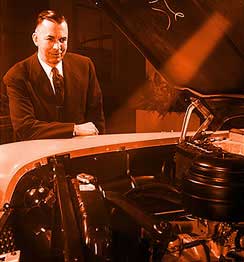 The book, “Zora Arkus-Duntov – The Legend Behind Corvette” by Jerry Burton is filled with wonderful stories about Cole and Duntov. One amusing story happened in early 1956 just after Cole and Duntov took a modified ‘56 Chevy Belair to Pike’s Peek and broke several records. After the event, while the guys were celebrating over drinks, Zora told Ed, “We should show the world that the Corvette is no longer an underdog. Let’s show how fast the car will really go.” Cole asked, “How fast is that?” To which Duntov just pulled a number out of the air and said, “Oh… maybe… 150 miles per hour.” Cole was interested, but reminded Zora that his main responsibility was the development of the fuel-injected engine. Zora took Cole’s interest as a go-ahead and started working on body modifications that would eventually lead to the speed record run on the sands of Daytona Beach with John Fitch, Betty Skelton, and himself driving modified ‘56 Corvettes. Duntov was a loose cannon, and he was Ed Cole’s loose cannon.
The book, “Zora Arkus-Duntov – The Legend Behind Corvette” by Jerry Burton is filled with wonderful stories about Cole and Duntov. One amusing story happened in early 1956 just after Cole and Duntov took a modified ‘56 Chevy Belair to Pike’s Peek and broke several records. After the event, while the guys were celebrating over drinks, Zora told Ed, “We should show the world that the Corvette is no longer an underdog. Let’s show how fast the car will really go.” Cole asked, “How fast is that?” To which Duntov just pulled a number out of the air and said, “Oh… maybe… 150 miles per hour.” Cole was interested, but reminded Zora that his main responsibility was the development of the fuel-injected engine. Zora took Cole’s interest as a go-ahead and started working on body modifications that would eventually lead to the speed record run on the sands of Daytona Beach with John Fitch, Betty Skelton, and himself driving modified ‘56 Corvettes. Duntov was a loose cannon, and he was Ed Cole’s loose cannon.
After Cole was made general manager of Chevrolet in ‘56, he embarked on an over-the-top project called the “Q-Chevrolets.” Cole was fascinated with the idea of using a transaxle on all Chevrolet cars (Corvette included) by 1960, with a marketing angle of Continue reading “Corvette Timeline Tales: Happy 102nd Birthday, Ed Cole”

